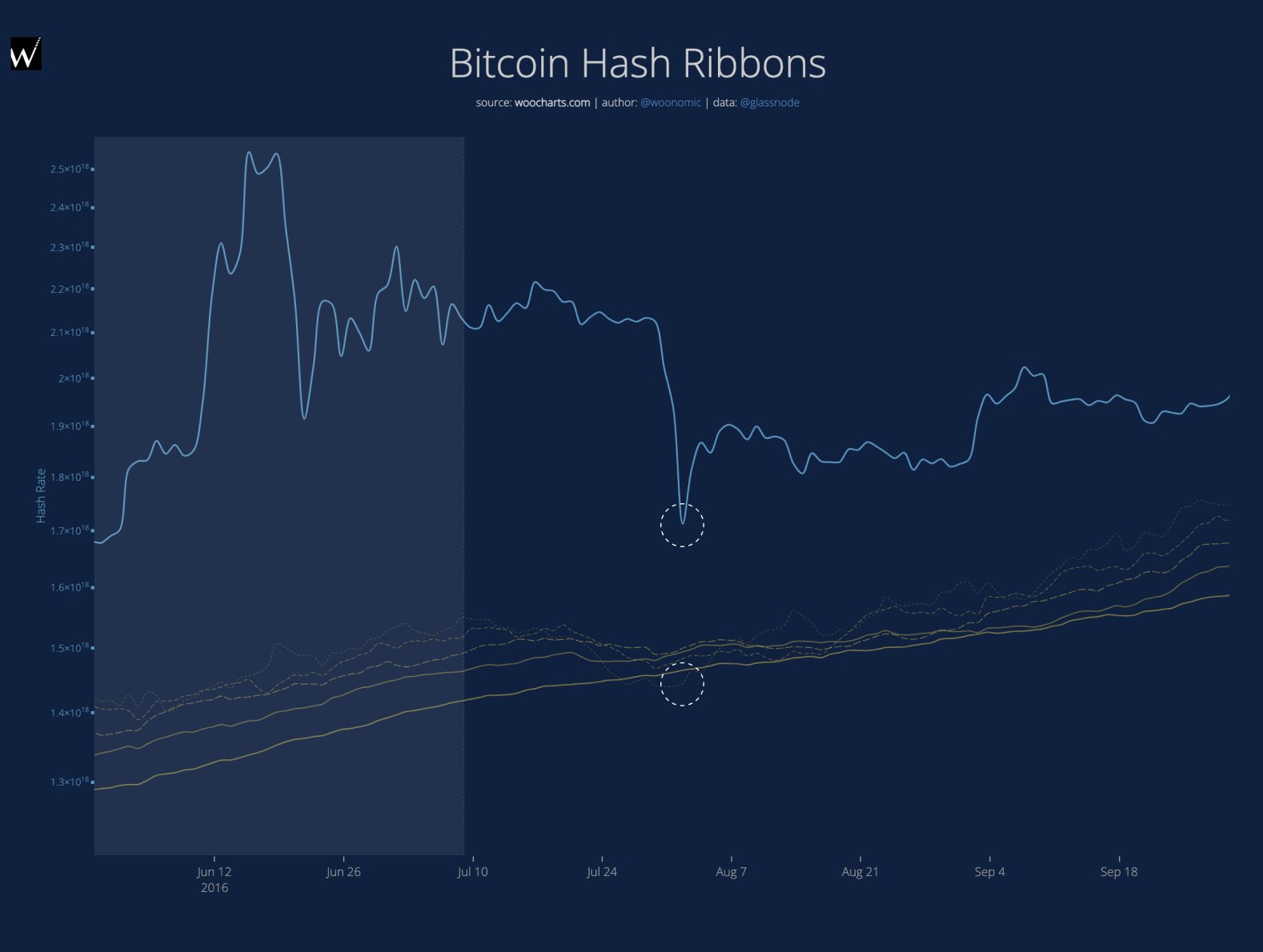An analyst explained that Bitcoin has historically seen recovery from bearish phases like the one the cryptocurrency is going through.
Bitcoin Hash Ribbons Show Miner Capitulation Is Ongoing
In a new post on X, analyst Willy Woo has discussed the relevance of the Bitcoin hashrate to the asset’s price recovery. The “hashrate” refers to a measure of the total computing power the miners have currently connected to the network.
The trend in this metric can be viewed as a representation of the situation among these chain validators. When the indicator rises, it suggests that miners are finding the chain attractive to mine on right now.
On the other hand, a decline in the metric implies some miners have decided to disconnect from the network, potentially because they are currently finding it unprofitable to mine BTC.
One way to gauge whether either of these behaviors is any sustained trend can be through the “hash ribbons.” This indicator compares a short-term moving average (MA) of the hashrate against a long-term one.
When the former falls below the latter, the miners capitulate en masse. Similarly, a crossover of the reverse type suggests capitulation among this cohort has ended.
Now, how do the hash ribbons relate to the asset’s price? As Woo notes, Bitcoin shows recovery when “weak miners die and hash rate recovers.” This corresponds to the phase of the market where capitulation has finished.
Below is the chart for the hash ribbons shared by the analyst that shows how the miner situation is looking right now.
The data for the BTC hash ribbons over the past several years | Source: @woonomic on X
As displayed in the graph, the Bitcoin hash ribbons signal that the miners are going through capitulation. The reason behind this poor situation of the miners lies in the Halving event that went through back in April.
Halvings are periodic events that occur every four years and slash the block rewards of the network permanently in half. The block rewards here naturally refer to the rewards miners receive as compensation for solving blocks on the chain.
These rewards make up the major part of the revenue of this cohort, so their being cut in half can drastically affect their finances. As such, it’s unsurprising that the hashrate has been in a downtrend recently.
Something interesting about the latest capitulation is that the hash ribbons have been giving this signal for 61 days now. “This one is for the record books as it’s taking a lot of time for miner capitulation post-halving,” says Woo.
For comparison, here is a close-up view of how the stressful mining period in 2016 looked like:
The miner capitulation event leading up to the 2017 bull run | Source: @woonomic on X
It took the miners 24 days to see a recovery back then, which is notably shorter than the length of the capitulation event in the current cycle thus far. The 2020 one was even shorter, with the hash ribbons seeing the reverse cross in 8 days.
The 2020 miner capitulation | Source: @woonomic on X
It now remains to be seen when the hash ribbons would cross back again this time around and whether the miner recovery would also lead towards a recovery in the Bitcoin price.
BTC Price
At the time of writing, Bitcoin is trading at around $63,900, down more than 4% over the past week.
Looks like the price of the coin has been on the decline recently | Source: BTCUSD on TradingView
Featured image from Dall-E, woocharts.com, chart from TradingView.com
Credit: Source link


































